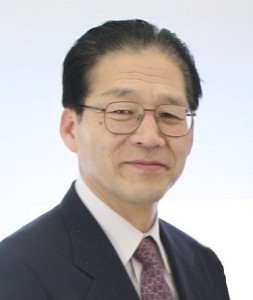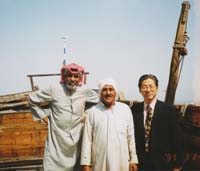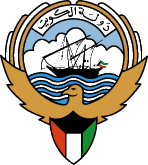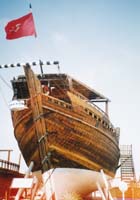Welcome to the website of Salaam Association!

I would like to extend my sincere congratulations on the 50th anniversary of Independence of Kuwait.
Ikuzo Kobayashi, President of Salaam Association
On the national emblem of Kuwait, Dhow, a sailing ship, on the waves, embraced by outspread wings of a golden falcon, which is the symbol of the Quraysh tribe to which Prophet Muhammad belonged, is described.
Kuwait located in the northeastern corner of the Arabian Peninsula, was an important point for land traffic, not only because it was a transit point for heading to India, Persia (now Iran) and down to Arabian Peninsula, but also because it was situated on the way to Basra and Baghdad for those coming from the Gulf region. It was also known as a coastal trading port which dealt with various Arabian ports and Persia.
After 1752 when Kuwait was formed into a city state, Kuwait people depended their economic activities mainly on the sea such as fishery and collecting natural pearls, which developed into marine trade among the Arabian Gulf’s coastal countries. A sailing ship unique to Kuwait, which is called Dhow, whose building technology is said to have been bought from India, was gradually improved by Kuwaiti people’s creativity, and gave birth to numerous kinds of Dhows.
Since 1900’s, Dhows developed into wooden sailing ships for coastal trade, and moreover came to play the hero of marine trade, sailing far into India and Eastern Africa. Around 1940, as many as 150 Dhows of 200 ton level bustled about the Kuwait Bay.
After oil was discovered, sailors and captains of Dhows who had been so active began to move to oil-related companies. So nobody navigated Dhows any longer. Dhow whose name is ” the Fatech-el-Khair” shown in the picture was sold to a Persia captain in Basra in 1952, which marked the end of era of the marine trade where main players were Dhows.
In 1994, Dr. Hijji discovered the Fateh-el-Khair which he had been looking for. The Kuwait Foundation of Advancing Science (KFAS) immediately decided to buy it back, and began to repair it. The rebuilt Fateh-el-Khair has been exhibited in the Scientific Center, Kuwait whose construction was completed in 2000.
Kuwaiti people bought back and recovered the Dhow which was once sold to a foreign country to hand their pride and tradition to the future generations. The name of Dhow, Fateh-el-Khair means “the beginning of happiness”.
 Kuwaiti people are said to be most progressive among the Gulf countries. From this episode, we understand how much they care about their history and tradition. When the age sailed out to the third millennium, His Highness Emir of Kuwait declared the goal of “making Kuwait the center of finance and world trade” and adopted the developmental plan with a huge amount of fund injected.
Kuwaiti people are said to be most progressive among the Gulf countries. From this episode, we understand how much they care about their history and tradition. When the age sailed out to the third millennium, His Highness Emir of Kuwait declared the goal of “making Kuwait the center of finance and world trade” and adopted the developmental plan with a huge amount of fund injected.
For the people who used to travel the vast desert, riding camels, stars must have been the guides they could depend upon. The sharp insight into the future which has been fostered under such environment, brought the people to the ocean, and later settled and built the State of Kuwait. The new goal which Kuwait put up seems to be the one based on the return to the beginning.
We Japanese also are suddenly reminded of the history of our country as a marine nation, and seeking after the image of a marine state worthy of the new era.
I wish from the bottom of my heart that the new and stronger bondage would be tied between Kuwait and Japan.
Thank you very much.
最近の投稿
Hello!
Hello! How are you?


